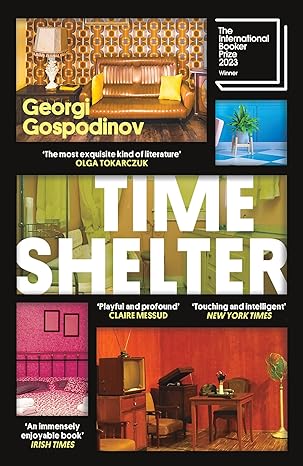In his novel the Time Shelter, the Bulgarian writer Georgi Gospodinov touches upon the unforeseen consequences of recreating the past for treating people with Alzheimer’s disease. This book won the International Booker Prize, the most prestigious award for fiction translated into English, for the year 2023. Leïla Slimani, Chairperson of the judging panel, said that “Time Shelter” made the judges question “the way in which our memory is the cement of our identity.”
The protagonist of the novel, Gaustine, established a Time Shelter for people with dementia. Each floor was an exact replica of a past decade. Everything from wallpaper to toilet roll was replicated from the decade. The radios played music and songs from that time, newspapers carried the same news, printed in the same style and same quality of paper as in the past. The staff wore dresses and uniforms mirroring the fashion of that time. The eighties floor had a ‘Berlin wall’ between the east and west wings, with staff in military uniform patrolling the borders. The enterprise was so successful that the people without dementia started frequenting it. The craving for nostalgia seeped out of the clinic and into society. The novel chronicles the march of Europe towards a dystopia of the past, with all its prejudices, divisions, and unfortunately predictable consequences.
Gospodinov’s characters include those who are marooned in islands of memory, professionals trying to help them and entrepreneurs and politicians looking to profiteer from nostalgia. The retired secret service agent who helped his former victim by sharing reminiscences, the mothers-in law who reacquainted themselves every single day, the long distance runner who wanted to save John Lennon from his impending murder, and the man who forgot his past, but not his fantasies are all part of Gaustine’s Time Shelter. The staff concerned about the impact of recalled memories on people with dementia, the businessperson who made it rich by staging real life re-enactment of the past and the politicians across the spectrum of ideologies looking to turn unrestrained nostalgia into votes, are all a part of this rich tapestry woven by Gospodinov. The loss of memory and longing for an idyllic past is a combustible mix. The book chronicles the pernicious effect of mass nostalgia.
Time Shelter reminded me of that timeless neurology classic by Oliver Sacks, ‘The man who mistook his wife for a hat.’ As with Oliver Sacks’ patients, the characters of the Time Shelter will find resonance in memories of people struggling with memory loss. The Time Shelter reminds us that the memory loss in dementia is not an orderly retreat, but a chaotic and confusing process. Gospodinov tackles the dark theme of loss of memory and personal identity using an engaging light-hearted style while treating his characters with dementia with sensitivity and respect.
Gaustine’s time shelter is a fictional form of reminiscence therapy, introduced to dementia care in the late 1970s. Reminiscence therapy involves discussion of the past, with the help of props like photographs, music, sound recordings, letters, books, and familiar articles. A Cochrane review concluded that ‘…. reminiscence therapy can improve outcomes for people with dementia, its effects are inconsistent, often small and can differ considerably across settings and modalities [1]. The effect of recalled memories on Gospodinov’s characters are also different. Occasionally, the surroundings did evoke unpleasant memories, as in the tale a holocaust survivor who cringed at the sight of showers. During reminiscence therapy participants could get upset. The Cochrane review concluded that such events are rare. Even though infrequent, these recollections could be distressing and sometimes catastrophic [1]. Trials of reminiscence therapy in dementia should have protocols that address such catastrophic events.
Reference
- Woods B, O’Philbin L, FarrellEM, Spector AE, Orrell M. Reminiscence therapy for dementia. Cochrane Database of Systematic Reviews 2018, Issue 3. Art. No.: CD001120. DOI: 10.1002/14651858.CD001120.pub3.
Acknowledgement
KPS Nair was supported by the NIHR Sheffield Biomedical Research Centre (BRC)/NIHR Sheffield Clinical Research Facility (CRF). The views expressed are those of the author(s) and not necessarily those of the NHS, the NIHR or the Department of Health and Social Care (DHSC).

